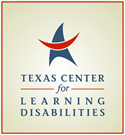Huber, E., Donnelly, P.M., Rokem, A., & Yeatman, J. (2018). Rapid and widespread white matter plasticity during an intensive reading intervention. Nature Communications, 9. https://doi.org/10.1038/s41467-018-04627-5
Summary by Dr. Jenifer Juranek
Background
Proficient reading skills require the integration of multiple information streams (i.e., interaction between multiple neural networks in the brain). Although several approaches have been used to investigate how reading difficulties emerge (genetics vs. experience), we need to stand back and remember that the human brain is not “prewired” for reading. Reading skills must be learned explicitly. This learning process essentially leverages the inherent neural plasticity within the developing brain structure and function to rewire a nonreading brain into a skilled reading brain.
Multiple investigations have assessed structural properties of neural networks underlying development of reading skills. Some structural features of the reading neural network are both highly heritable based on genetics and malleable based on experience. In particular, the development of white matter tracts, the “wires” connecting different information streams within the brain, fits this concept of being highly heritable in the prereading brain and also experience-dependent in the learning-to-read brain. White matter is termed “white” because of the fatty insulation that wraps around important connections across the brain to speed information transfer and processing.
Approach
In this paper by Huber et al. (2019), advanced neuroimaging techniques and a longitudinal response to intervention study design were used to assess structural properties of specific white matter tracts in relation to changes in reading skills. The changes in white matter were measured during an intensive 8-week summer reading intervention program developed for struggling readers ages 7 to 12.
Findings
- Prior to the summer reading intervention program, structural properties of different white matter tracts were correlated with composite reading skill scores, replicating previous nonintervention studies in which some white matter tracts were shown to be significantly related to reading skills, whereas other white matter tracts were not. The white matter tracts that are part of the brain’s reading network were the ones significantly related to reading skills. Additionally, these relations were specific to reading skills because math skills did not correlate with structural properties of the same white matter tracts.
- Following the intensive 8-week summer reading intervention program, reading skills substantially improved while math scores did not. Specifically, significant growth in reading accuracy was evident in the intervention group. Although practice effects of repeated testing were observed among skilled readers, a reading-skill-matched subsample (n=9) demonstrated that poor readers specifically improved reading skills due to the summer intervention.
- Changes in reading skills were accompanied by changes in structural properties of white matter tracts associated with the reading network. The changes in white matter tract properties were specific to reading skills (not math skills) and specific to the reading intervention group (not the control group).
- The authors interpret these white matter findings as evidence of rapid intervention-driven changes in brain structure underlying changes in reading skills seen in struggling readers.
- The authors also explored whether improvement of reading ability reflected a normalization process whereby the remediated struggling readers exhibit white matter structural properties more similar to typical readers after the intervention. Alternatively, improved struggling readers may have used a compensatory mechanism driven by neural plasticity to tap into additional resources recruited to support intervention-driven growth in reading skills. They did not find evidence to support the normalization hypothesis, but rather found that additional resources were recruited to compensate for deficits.
Discussion
Following an 8-week summer reading intervention program developed for struggling school-aged readers, significant changes were observed in both reading scores and structural properties of white matter tracts in the intervention group. While structural changes were primarily tested in white matter tracts associated with the reading network, other white matter tracts exhibited structural alterations as well. Although difficult to disentangle, the intervention-based improvements appeared to be more consistent with a compensatory mechanism rather than a normalization process. This study suggests that remediation of reading deficits encompasses additional resources beyond those engaged in typical readers during acquisition of skilled reading. Widespread changes in white matter tracts were observed post-intervention, suggesting that experience-dependent anatomical changes accompany intervention-based improvement in reading skills. This paper is notable for suggesting that structural changes in the brain happen rapidly rather than slowly and that they relate to educational change.
